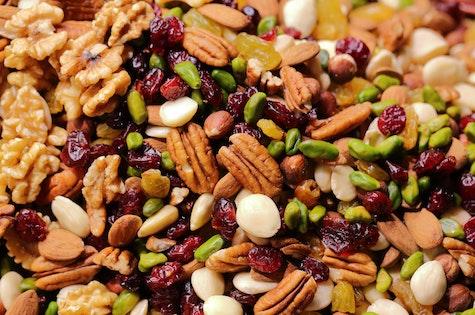The need for good nutrition for children can’t be over emphasised.
Nutrition during children’s formative years is essential for healthy growth. It also lays the foundations of what they’ll consider to be a snack into adulthood. Half the sugar that children eat tends to come from snacks and sugary drinks.
Providing a range of tasty, yet nutritious, snacks for children from an early age will promote good dental health, cardiovascular health, whole body development and energy levels.
Steering your child towards the right snacks can be challenging. Sweets, biscuits, crisps and all manner of packaged snacks are designed to give a quick pleasure hit, stimulating the areas of the brain that make them so addictive. There are many ways to easily swap unhealthy snack habits for those that are tasty, nutritious and easy to prepare.
Our 6 Tips for Children’s Snacks
-
Have fruit on hand and highly visible: Having a well-stocked fruit bowl keeps this healthy snack right on hand. Older children can munch on a whole piece of fruit and the under 5s will love the sweet fix of sliced up apple, pear, banana or what’s in season.
-
Freeze in the nutrients: Low fat frozen yogurt or freezing pieces of fruit - watermelon is great frozen. Add a lolly stick for a delicious healthy cooler on a hot day. They can be eaten straight from the freezer. Just take care with younger children – such fruits should be sliced lengthways and allowed to soften slightly before allowing the child to eat them – always be aware of the choking hazard of small, round fruits with the under 5s.
-
Swap in the protein: Snacks don’t need to be sweet and plenty of protein is needed for a balanced diet. Hard boiled eggs are easy to prepare and affordable option, as is cheese, fish, seafood and poultry. Consider pieces of chicken and even cold cooked prawns (with the relevant allergy care.
-
Nuts: These are one of nature’s powerhouse snacks, packed full of healthy fats, protein, fibre, vitamins and minerals. A small pot (and again, nuts should only be given at an appropriate age, and not whole to those under 5) is a great alternative to crisps. For smaller children, consider crushed, ground nuts or peanut butter, perhaps spread on a cracker.
-
Smart swaps: Rather than reaching for the biscuit tin, have alternatives on hand for when your child wants a snack. Plain rice cakes satisfy that ‘crispy, crunchy’ craving, as do crunchy vegetables. Adding cottage cheese to a cracker instead of butter reduces the fat content, and if you must feed cake then go for a fruited option, rather than something like a chocolate muffin.
-
Home baking: While not everyone has the time (or patience) to bake at home, it can be truly advantageous and a great bonding activity to do with your child. Using natural fruit sweetness you can create tasty snacks, such as carrot and apple muffins or banana and date flapjacks.
The dynamic behind healthy snacking for children is to break (or not introduce in the first place) the sugar mindset. You are your child’s greatest role model, leading by example will have the greatest impact.
At Nido Early School, our early childhood educators are committed to carrying on the great work that parents and caregivers do at home. We’ve taken great care to ensure that all our centres provide a nutritious menu to suit all eating choices and cultures.
Visit https://nido.edu.au/ to find out more.















__small.png)










